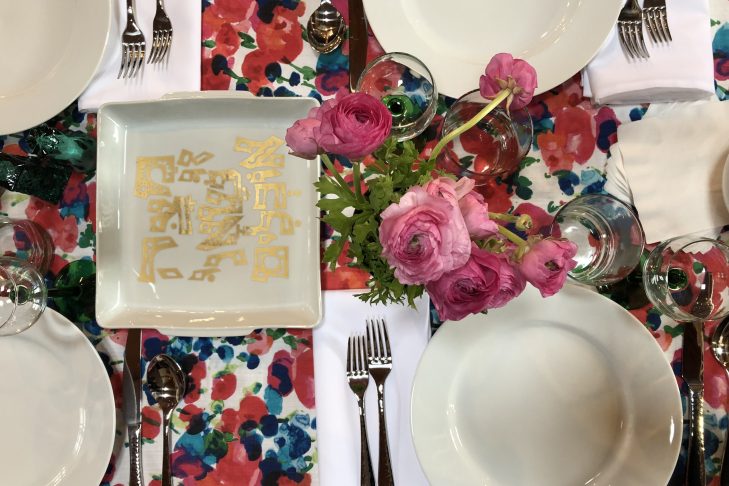For years we had celebrated the first night seder with my husband Adam’s family. My mother-in-law is a hostess and Passover was her holiday. Her seder tables practically glowed—crisp, white linens with fine china and sparkling silver; crystal wine glasses brimming with purple Manischewitz; a grand china seder plate with miniature scenes of the Exodus; dainty bowls of salt water placed strategically down the table; a whimsical, wicker, chicken-shaped basket filled with hard-boiled eggs; a colorful Haggadah resting at each place setting; artfully arranged platters with recipes both beautiful and delicious; and for dessert, a majestic meringue “floating island” in apricot sauce. From the head of this elegant table, each year Adam’s father led the seder, transfixing his grandchildren with little toy “plagues” tossed around the table and a fiercely competitive afikomen hunt.
These family traditions, meaningful and familiar, continued year after year. Of course, as the years passed, the family grew. At first there were more grandchildren and cousins, and then the “children” had boyfriends and girlfriends of their own. We moved from the dining room to the living room. As the table expanded, so too did the work. My in-laws were aging, and frantic planning, debate and worry now dominated the months before the seder. It seemed the time had come for a change.
The emotional discussions about “giving up the seder” carried on for some time. The first year Adam and I offered to take over, we were promptly, albeit politely, declined. But as we approached the next spring, the idea of change had begun to settle. I could sense both pain and relief in my mother-in-law’s decision. She was losing something deeply meaningful to her, a piece of her identity. While I may not have entirely understood the depth of her feelings, I suspected that someday I would. Much like I tell my own children about parenting, “Someday you’ll understand.”
The first seder in our home was a bridge between what had been and what would be.
My mother-in-law once again prepared her special Passover dishes—homemade gefilte fish, chicken soup with matzo balls, sweet charoset and fragrant brisket. The items arrived with handwritten notes of instruction (or, depending on your perspective, suggestion) about how each should be served. There were plastic baggies of garnishes labeled for each dish. Even the wicker chicken basket found its way to our house—complete with its eggs! I saw humor in all of this. But I saw meaning too. She was creating a bridge, passing on the traditions, holding on while letting go.
It is seder night. Siblings and aunts and uncles and cousins arrive from near and far. We are 28 in all. I set the table carefully with an eye toward seeking my mother-in-law’s approval. And then I add a few creative flourishes of my own. Adam replaces his father at the head of the table and leads his first seder. It is beautiful and spiritual, filled with discussion and learning. It is the same, but different. We drink our four cups of wine and tell the story of the Exodus from Egypt. The chicken soup is served just right, complete with its lovely garnish, in my own newly purchased bowls.
Over dinner, we share memories of seders past. My mother-in-law tells a story of a seder when she was a little girl in rural Pennsylvania. In that moment, I see the chain stretching back. I understand that she has entrusted us to continue her traditions.
Then I see the chain stretch back even further. It weaves through generations and generations and thousands of years. I think about the meaning of Passover and the rituals of the seder. We are teaching our children—passing on our traditions, explaining the symbols on our table, eating the same foods, telling and retelling the story of our people. The seder is creating that next link in the chain; it is the continuation of all of our story. I realize there can be no “giving up” of the seder; we are all just caretakers for the next generation.
Then I see the chain stretch forward. I think about my sons sitting at the head of their seder tables someday.
I recently came across a note that my mother wrote to her mother over 30 years ago when my grandmother was no longer able to host the seder in her home. My mother wrote: “The seder may move from home to home, but the spirit of it is you—the smells and the tastes are 100% you, mom…I hope that this Pesach was a little easier on you—don’t feel guilty—you shouldn’t have to suffer to feel that you made the Pesach seder for the family. The room is incidental—the seder is you, mother.”
I wish you and your family a meaningful Passover filled with traditions of generations past, present and future, both the same and different. Chag sameach!



